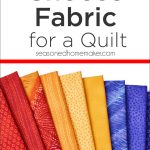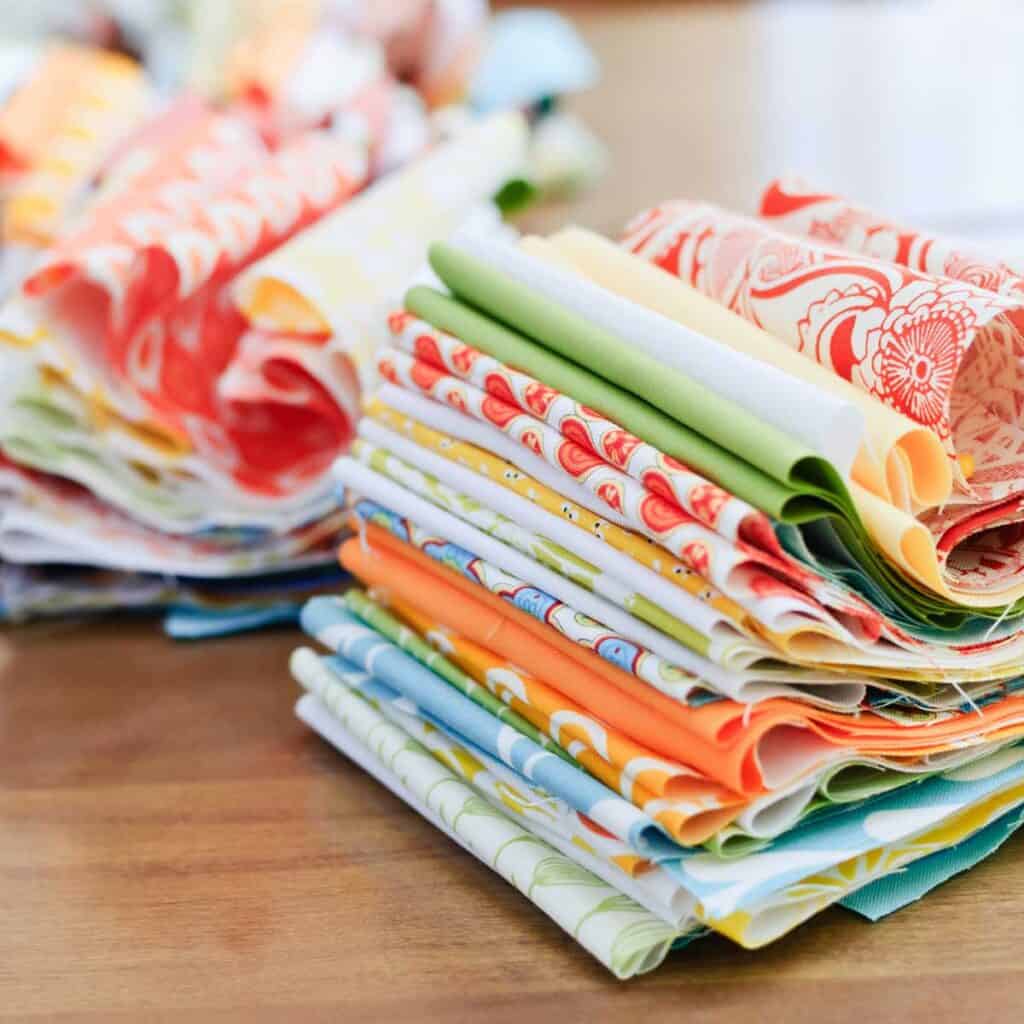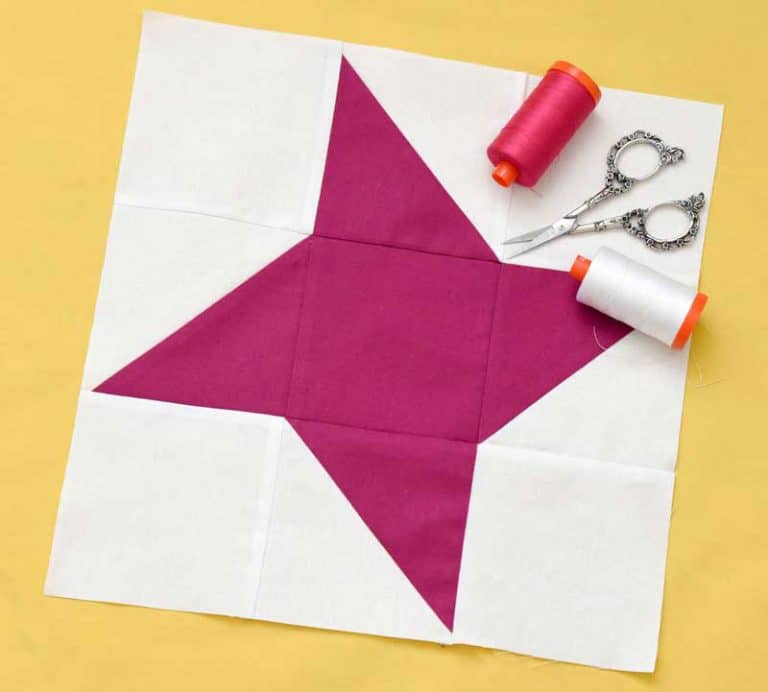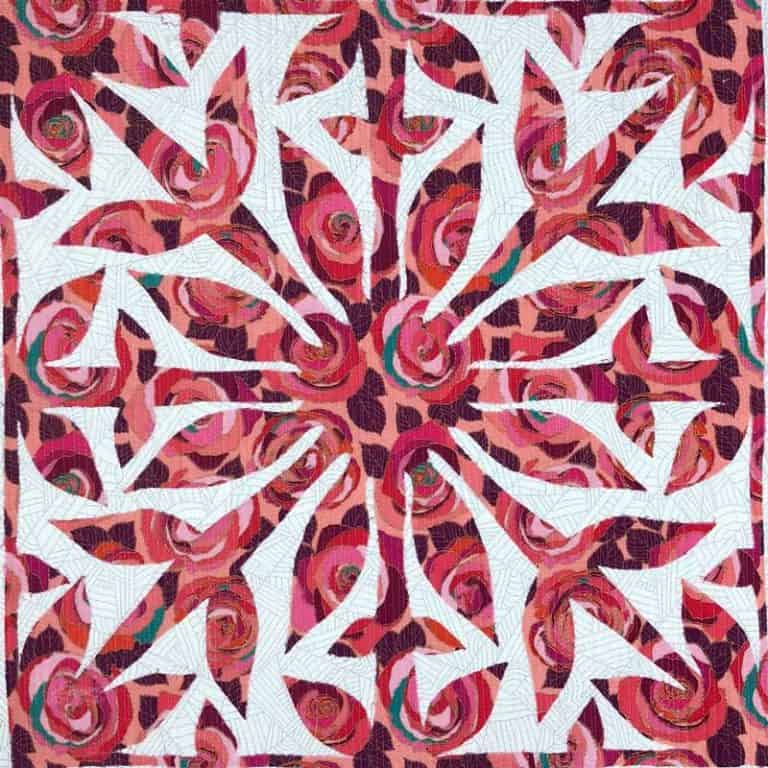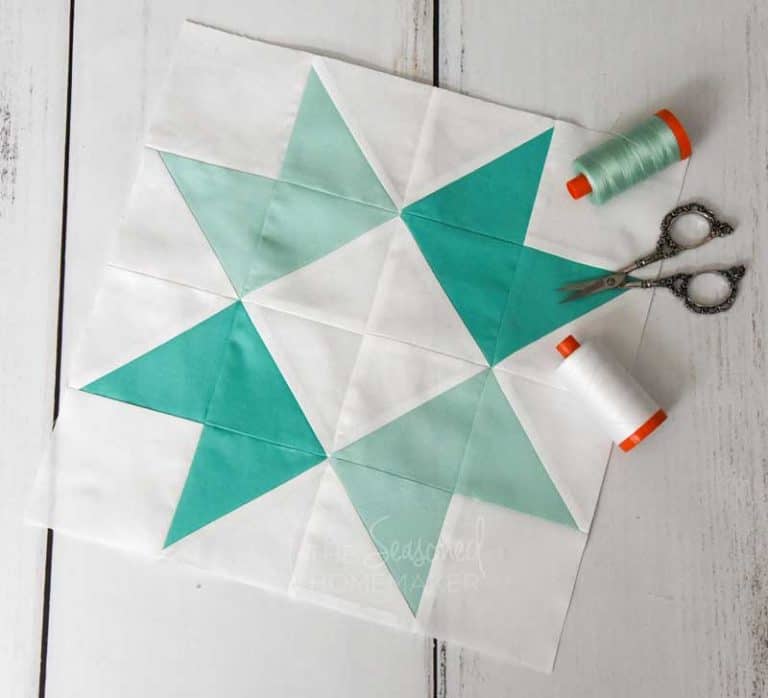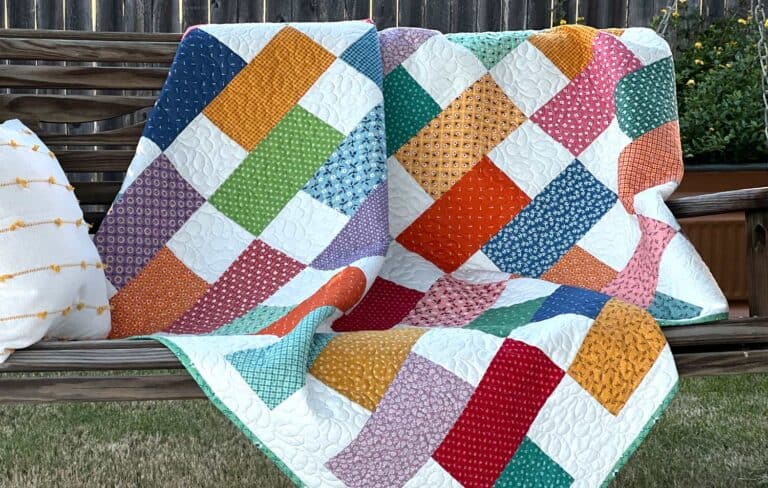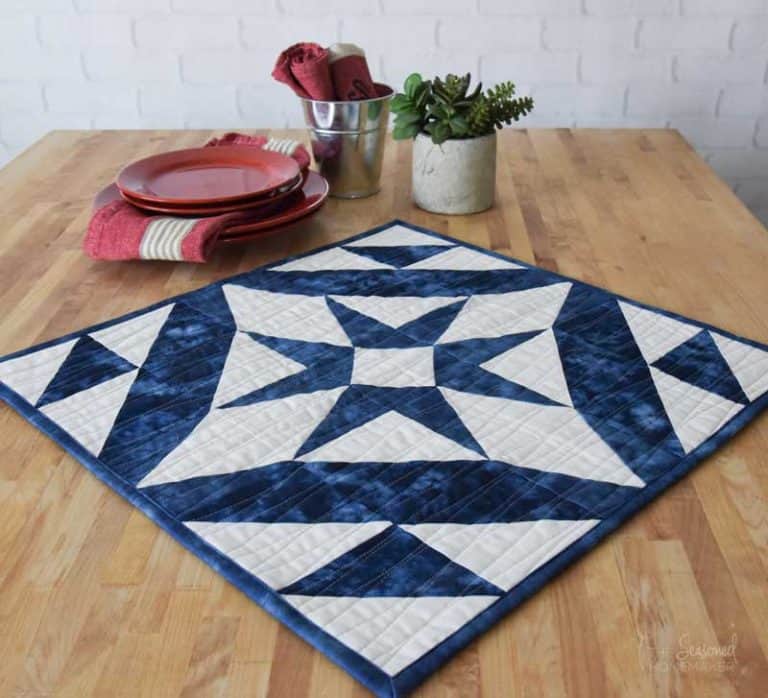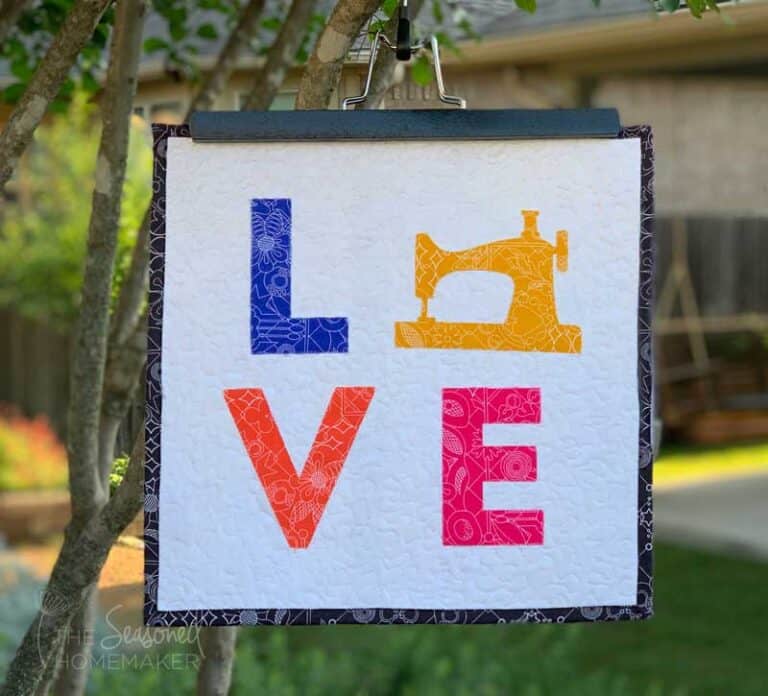How to Choose the Best Fabric for a Quilt
This post may contain affiliate links which won’t change your price but will share a commission.
Inside” How to Choose the Best Fabric for a Quilt
Have you ever walked into a fabric store and felt overwhelmed by all of the colors and choices? Your eyes are scanning the store from left to right, taking in all the vibrant colors. Then you come to a screeching halt and feel like running away.
The overwhelming feeling of too many choices causes fabric paralysis. That’s why I’m going to share some tips I’ve learned on How to Choose the Best Fabric for a Quilt.
How to Choose the Best Fabric for a Quilt
If you are walking through a quilt show, one of the things that will likely jump out is the particular fabrics used in the quilts. While attending a local quilt show I noticed that there were several entries using the same quilt pattern, but each quilt was unique based on the fabrics featured in their quilts. Some of the entries were also quilted in a way that highlighted features in a particular quilt.
Seeing this caused me to take a closer look at the art of choosing fabrics for a quilt. When you don’t have an art degree or years of quilting experience, where do you start when it comes to choosing quilt fabrics?
1. Try a Kit or a Pre-Cut Collection
Like me, many of you may be challenged in the area of choosing quilt fabrics. As in, you have no idea where to begin. When I first started quilting this was the place where I stalled, and to be perfectly honest, it still slows me down a little.
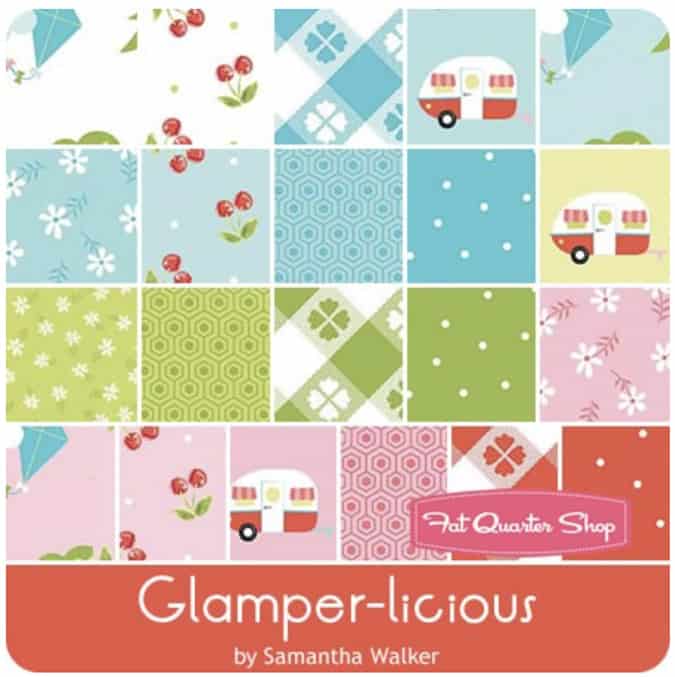
(Image courtesy of affiliate FatQuarterShop.com)
While learning about quilting, why not consider a collection of fabric pre-cuts. They are a little more expensive, but this is the easiest way to learn how to curate a collection of fabrics for a quilt. Many collections will have a variety of fabrics with different print sizes (scale) and matching colors. Here’s what you’re likely to see:
- Large scale print
- Medium scale print
- Small scale print
- Geometric or Striped variation
- Random Dots
This isn’t a hard and fast rule, it is more of a guideline for many collections. Following this template allows you to eventually move on to choosing your own fabrics from a variety of collections.
The same is basically true when you work with a Kit. All of the fabrics are chosen for you in advance according to size, scale, and color. Choosing a kit will allow you to build your quilting confidence before branch out and making fabrics choices on your own. This example shows a modern variation of a kit where fabrics from a collection are pieced together to create a modern design. Notice all the different pattern sizes and the use of solids.
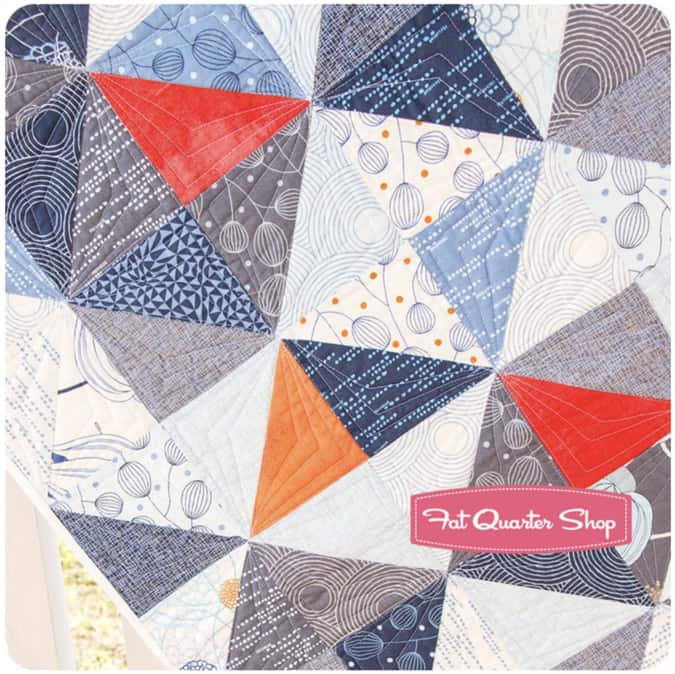
(Image courtesy of affiliate FatQuarterShop.com)
2. Color Theory
- Choosing colors for a quilt is a big topic that could use a post of its own. Since this post isn’t dedicated to color theory, I am going to encourage you to take a little time to learn more about color in quilts. This Craftsy class on Color Play for Quilters covers the topic extensively.
- On a very basic level, the best place to start is with a piece of fabric that you want to build a quilt around. Get out that ever-useful color wheel and compare it with the colors in your fabric. The color wheel will help you choose either complementary or contrasting color.
One thing that has really helped me gain a better understanding of color in quilts is taking my colored pencils and drawing out the quilt. It’s not perfect, but I get a basic understanding of how the colors will play out on a quilt.
I recently invested in a software program called EQ8 which allows me to download fabric collections and then play around with quilt design and color. There is a learning curve (which I haven’t completely conquered) with this program; however, I am able to quickly see if my color choices are going to go together or not. The program is available for PCs and Mac’s. They also have a pared down version called EQ Mini which is less expensive and not quite as complicated.
3. What is Low Volume Fabric?
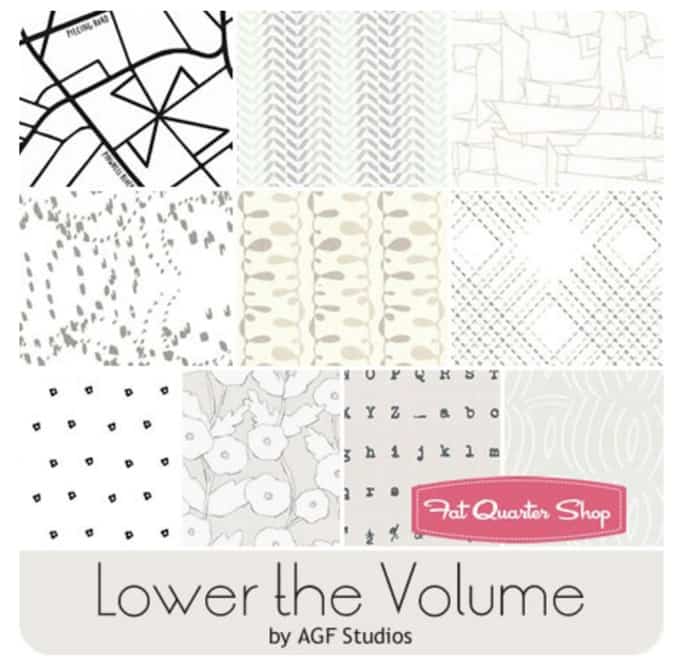
(Image courtesy of affiliate FatQuarterShop.com)
The first time I heard the term “Low Volume Fabric” I had no idea what the instructor was talking about. Low volume is a term that refers to the color value of a piece of fabric. These fabrics will look like they are light, but they usually have a secondary design. They are more common in modern quilts and you will see them used as background fabrics.
The key to using low volume fabrics in a quilt is to make sure your featured fabric is a bright, saturated color and has a high contrast compared to your low volume fabric. If you choose something too close in color value, your design won’t stand out as much. I made that mistake with this quilt.
I love to use low volume fabrics for half-square triangles. It adds a little interest to the quilt but still looks like it has a light background. These are also fun fabrics to collect when you’re on a shop hop. I try to pick up one or two every time I visit a new quilt shop. You never know what you’ll find!
4. Pay Attention to Scale
When choosing printed fabrics it’s important to pay attention to the overall scale or size of the design printed on your fabric. Some quilts work better with small prints that could almost read like a solid. These are great because they add a little interest to your quilt.
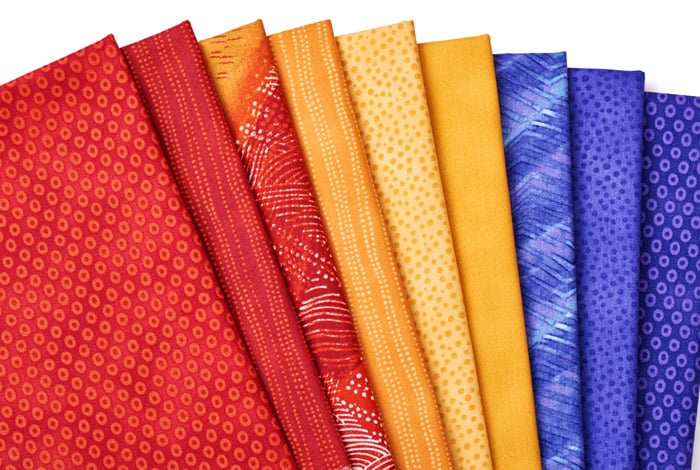
Quilt designs with larger blocks can be a great way to highlight a larger print. Picture something really interesting in the center of a quilt block, then set it off with contrasting sashing.
One way you can determine scale is by measuring the pattern repeat in the fabric. This will help you determine how best to use a piece of fabric.
5. Practice Makes Perfect
When choosing fabrics for a quilt, there really is no substitute for practice. I believe the best place to start is by understanding the color wheel. From there, you should try practicing with some scraps. Once you’ve gained a little confidence, it’s time to visit a quilt shop and start auditioning fabrics. Best of all, no more fabric paralysis.


